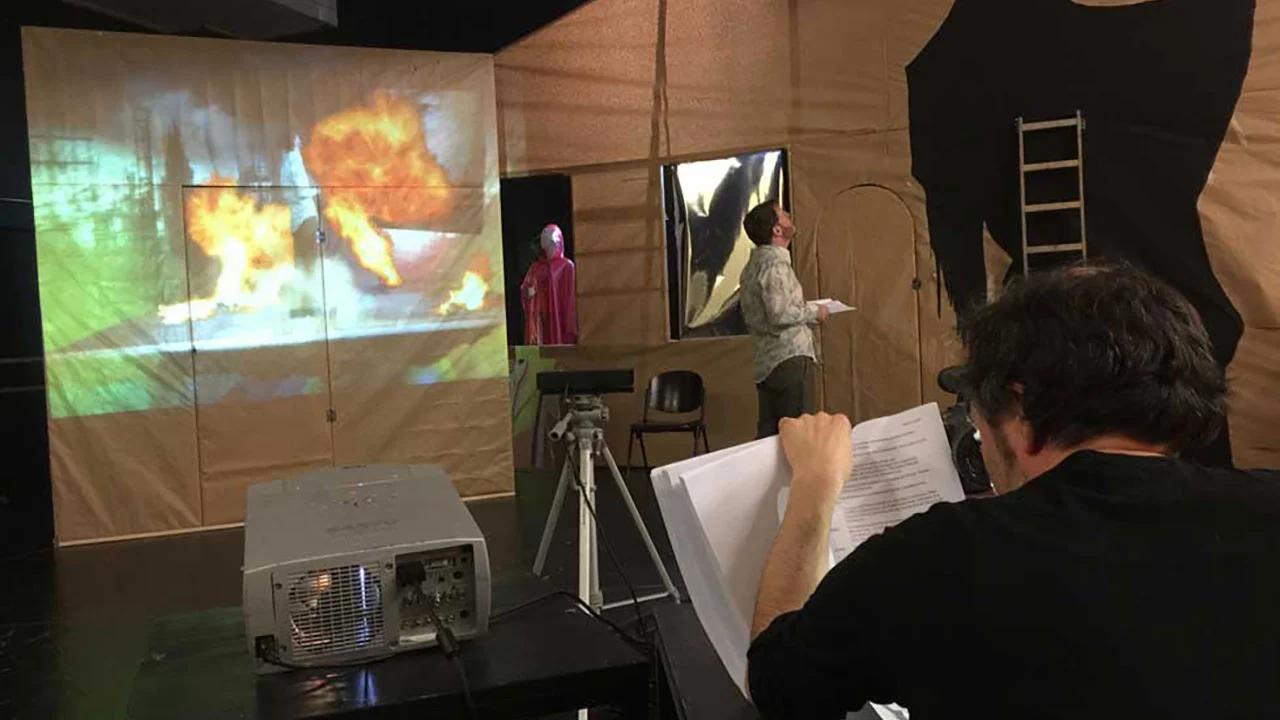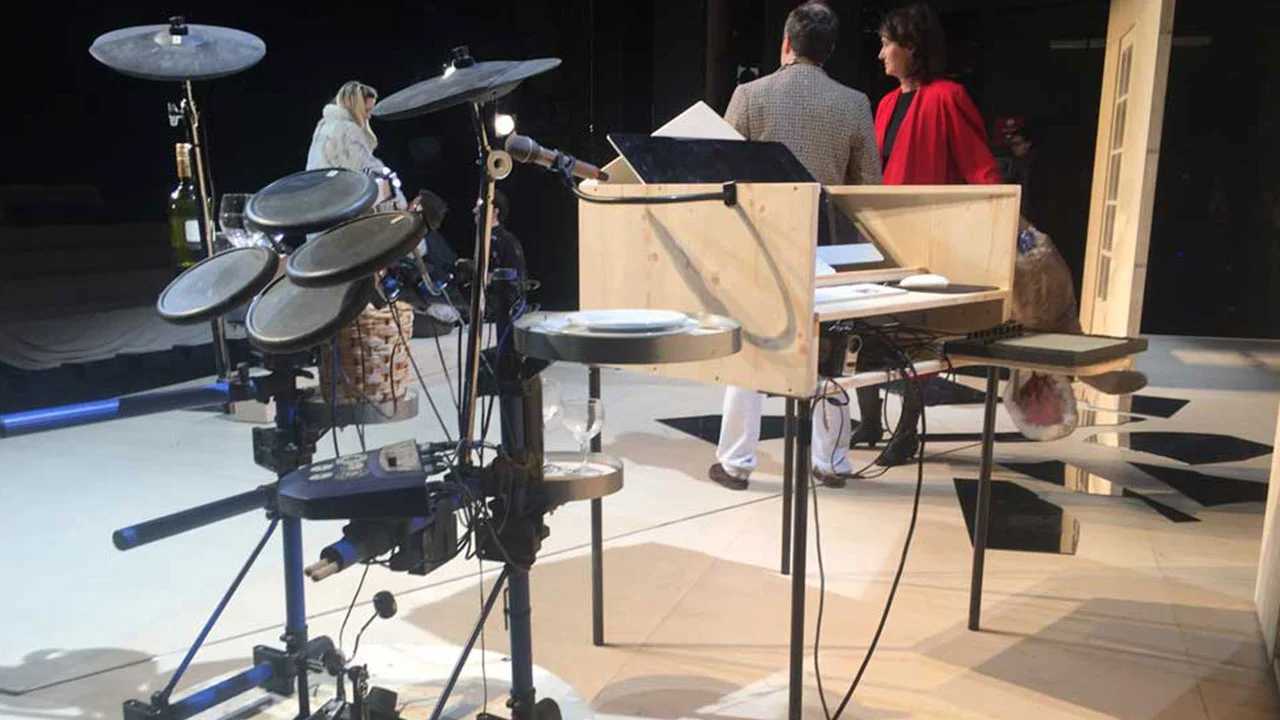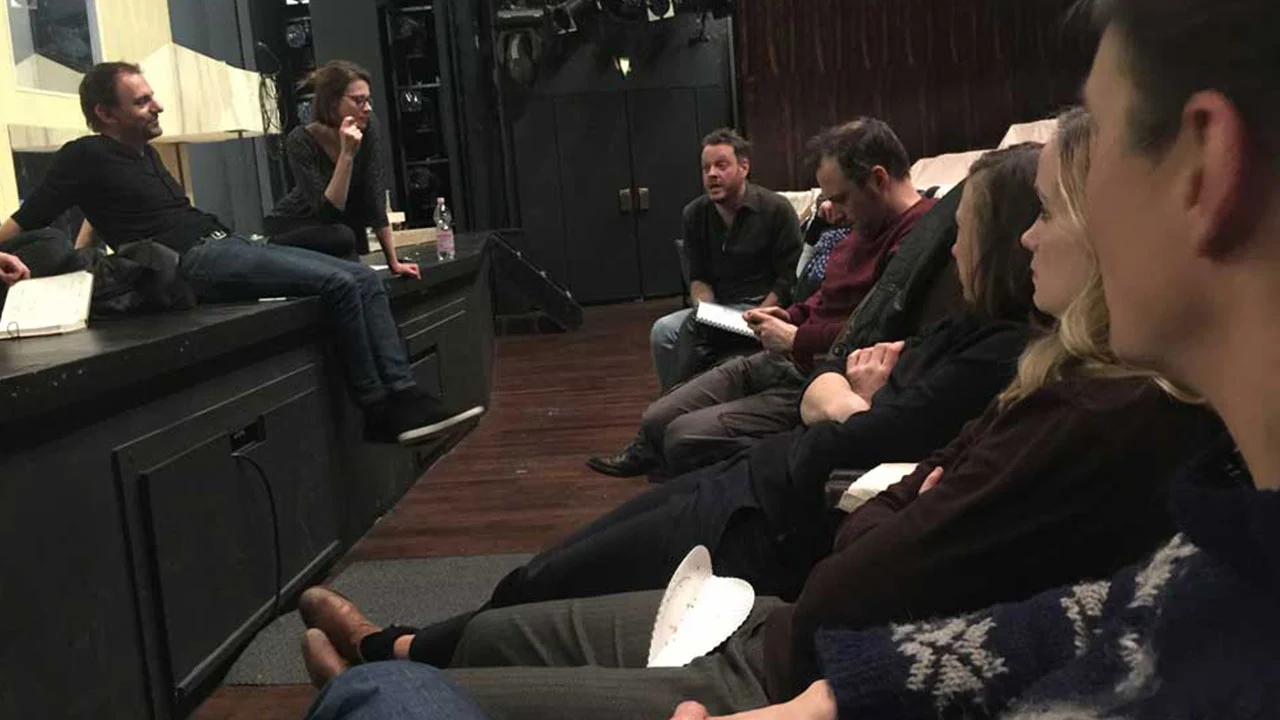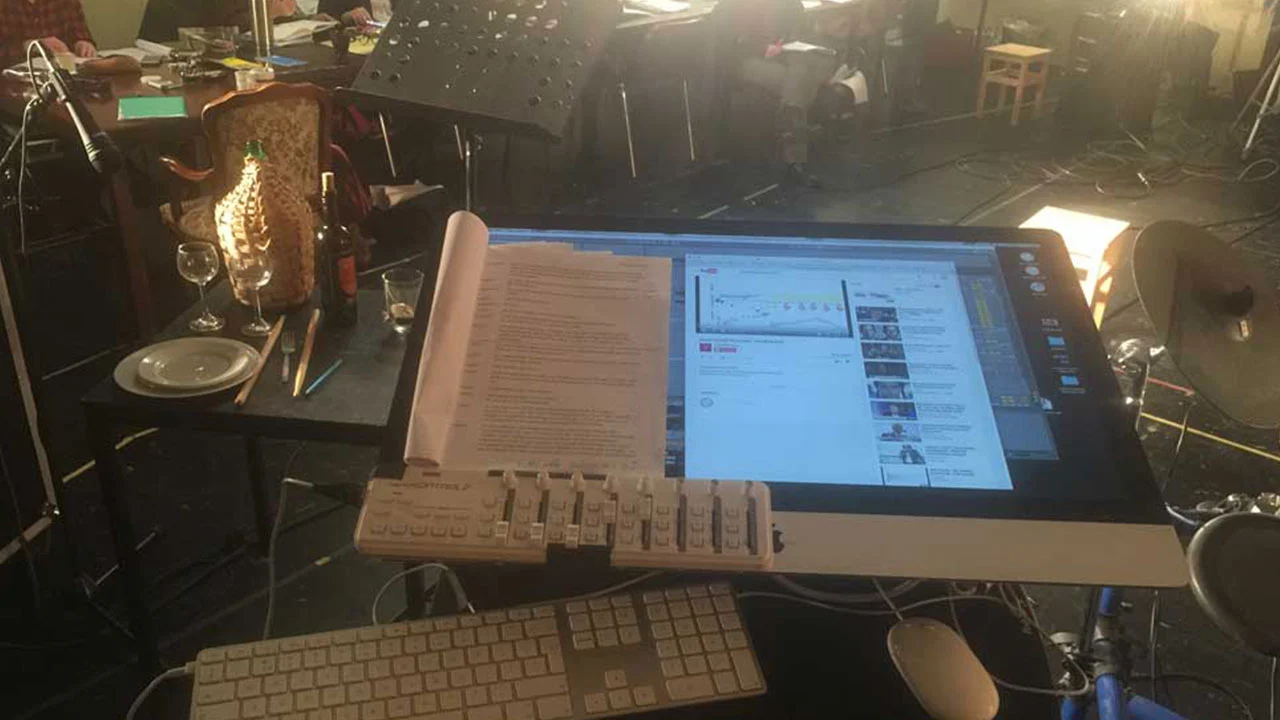











Augmented Stage software
The videos below depict the final scene of the play, the Magic Theater scene. On the left, you can see how our custom software and Ableton Live, are utilized. Using a 3D camera, the actors immerse themselves in the video projections, interacting with the graphics by touching and moving them, being recorded live, shooting fire, transforming into a wolf, and more. The Magic Theater scene comprises five parts: the Mirror Room, the Hill, the Chessboard, the Wolf Trainer, and the War.
Production
During the production of Der Steppenwolf, we collaborated closely with the actors, actresses, director Paul Koek, set designer Dorothee Curio, lighting designer Bernd Felder, and dramaturge Olaf Kröck to design all the music and visuals. For the 3D camera scenes, we carefully considered the structure of each scene. A computer, mounted in a mobile set piece and controlled by an actor, managed all the audio-visual elements. Additionally, a MIDI drum kit, played by another actor, drove the audio-visuals. The music was built on stage from live audio recordings made during the performance.





In the Media
https://www.lokalkompass.de: “With just six actors Paul Koek uncovers the mysteries of Der Steppenwolf. The pivotal point is the Magic Theater scene, in which main character ‘Haller’ discovers completely new aspects of himself. This is where the seventh main actor of the evening comes into play: the musician and video artist Jeroen Hofs, known under the name Eboman. His contributions make the “Steppenwolf” production a sensual pleasure that probably cannot be fully grasped even after multiple viewings.”
https://www.waz.de: “Only six actors share all the characters: from Goethe and Mozart to the landlady. The musician and electronic inventor Jeroen Hofs (aka Eboman) is particularly important, as he accompanies the action live on stage with sounds and videos. Especially in the final part, which takes place in the famous “Magic Theater”, the audience can look forward to a lot of technical innovations.”
https://www.kultur.de: “Video installations open up another space, deeper into main character ‘Haller”s confused head and soul. There’s more going on here: Jeroen Hofs’ videos split up Haller projections and place a mini Haller on a bright, colorful fairytale mountain. Haller himself wipes himself away. He fights in chess, eats himself up and fights in the first-person shooter. This is well done and makes Haller’s problems tangible as a relatable experience of confusion. The slightly psychedelic 60s look cleverly alludes to the Hesse renaissance among the hippies. In the background of the Haller Limbo, Jeroen Hofs, dressed like a Hare Krishna disciple, mixes the accompanying music live. The constant ringing and thumping creates a pleasant feeling of unreality.”
https://www.staedte.de: “Koek’s specialty is giving his performances a particularly musical touch. In “Der Steppenwolf” he finds a congenial colleague in the Dutch musician and video artist Jeroen Hofs. In the electronic music scene, Hofs is known under the stage name “Eboman” and conjures up a thumping carpet of sound and video clips of rarely seen sophistication on stage at the Kammerspiele. This is itself magical theater, but its brightly colored aesthetics sometimes obscure the abysses that lurk in the text.”













